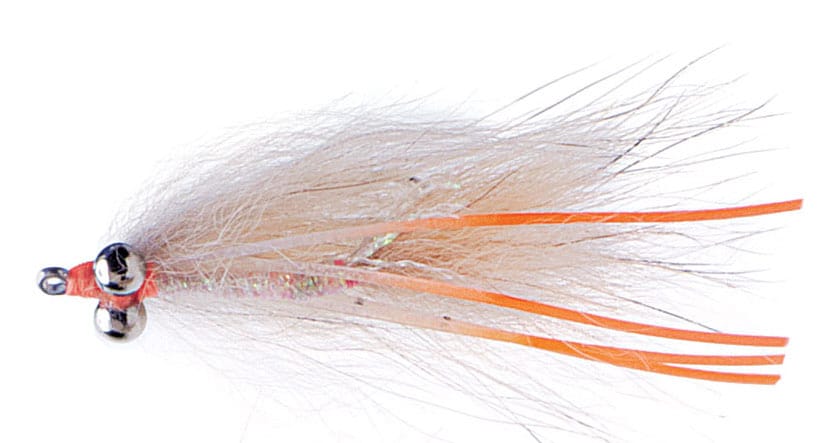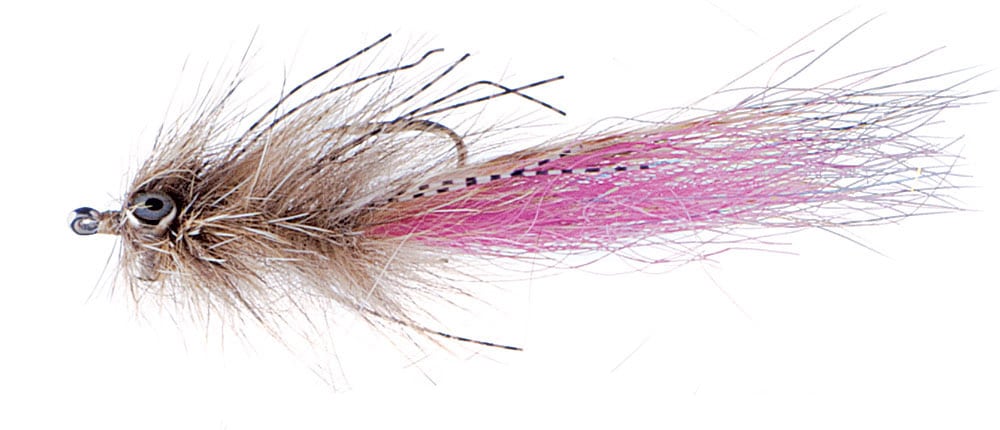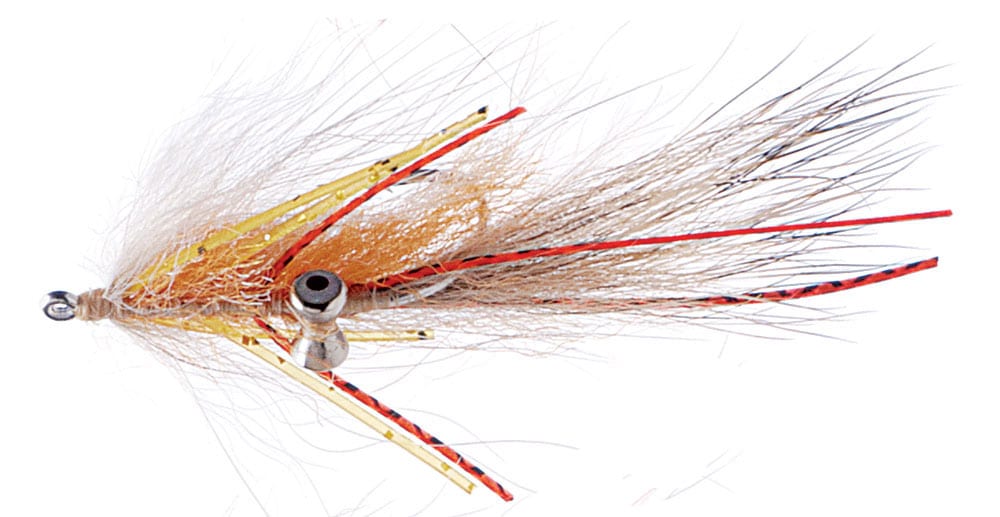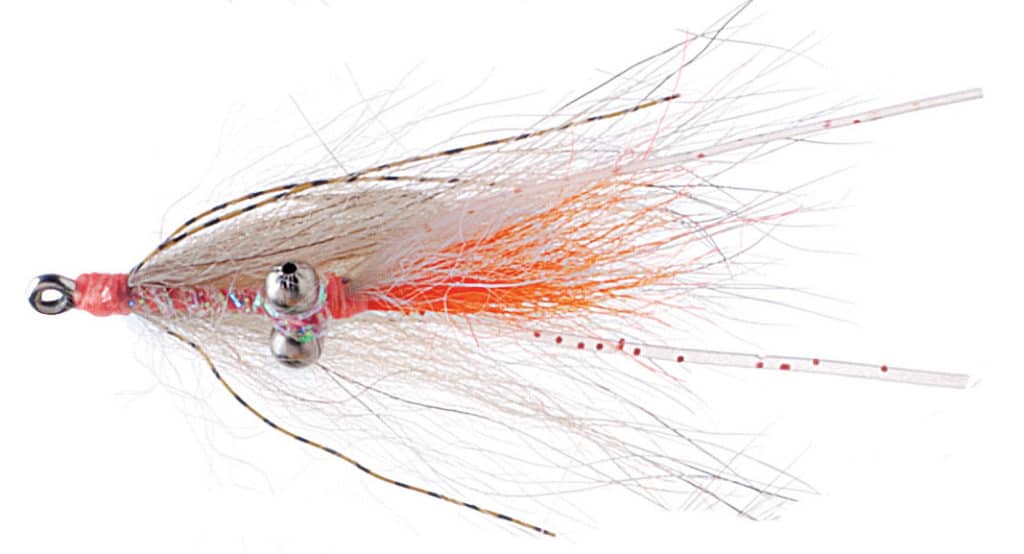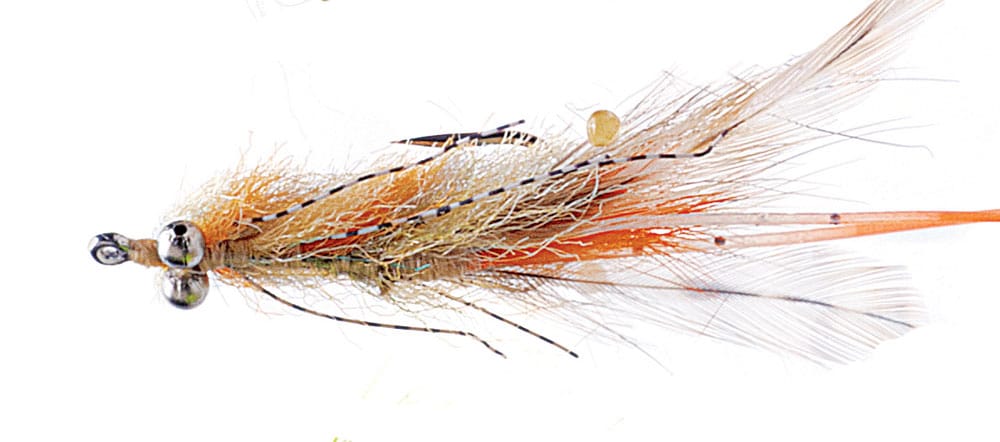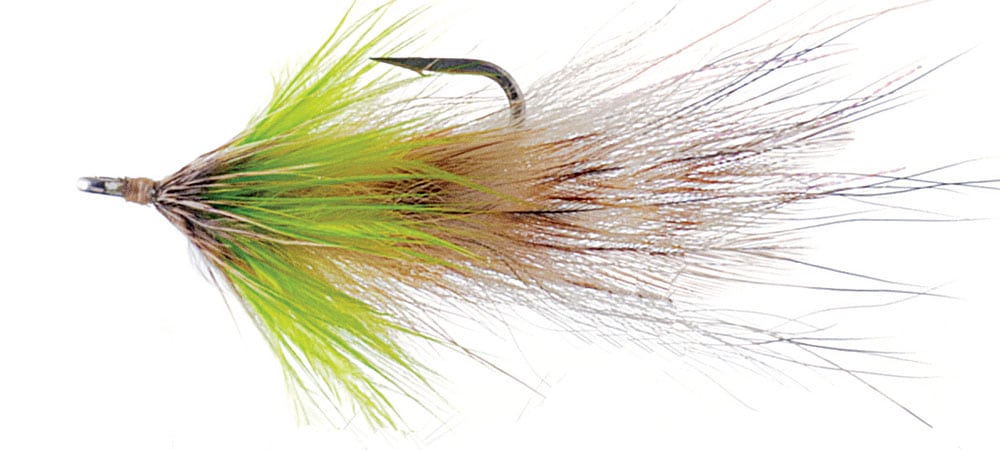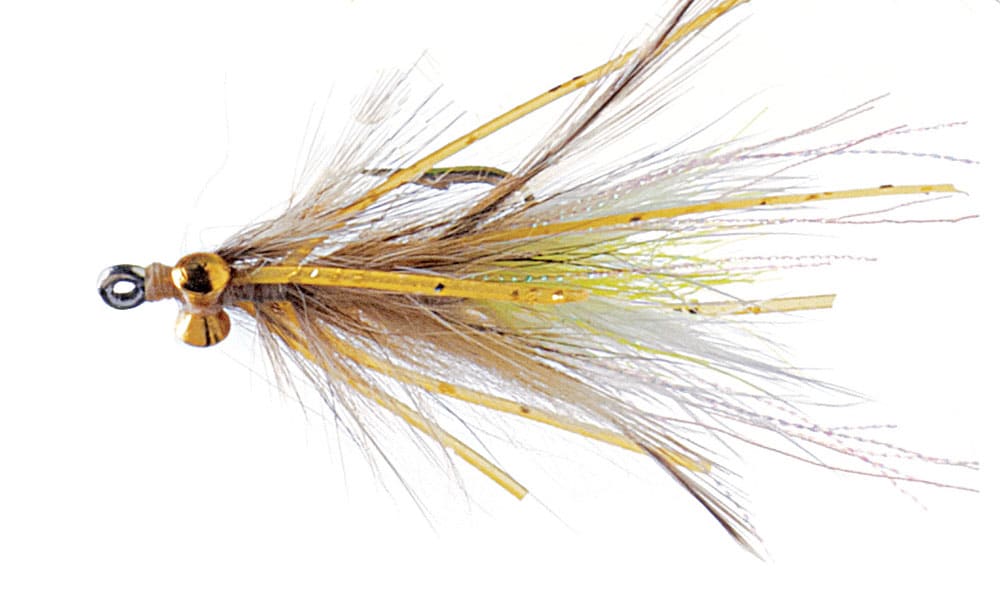
[Click through all the flies in the gallery above.]
Twenty-five seconds doesn’t sound like a long time. But imagine you’ve stalked a big bonefish across 100 yards of shallow lagoon, watching its tail and dorsal fin flicker out of the water when the fish feeds. You finally get within range and lay out a 50-foot cast that lands about four feet short of the fish. The bonefish heard the soft splash of your fly landing and turns toward the sound. Now, look at your watch and count 25 seconds.
Behind you, your guide is whispering, “Don’t move it. Wait. Don’t move it.” The fish noses closer, wavering left and right, looking for the source of the noise. “Don’t move it. Wait.” The anticipation builds. You are holding your breath, trying to will the fish into finding the fly, and your synapses are firing, telling you to twitch the fly to get the fish to see it. The guidance from the platform remains, “Don’t move it.” The seconds tick by, and you’re thinking the fish has to be almost on top of the fly. Suddenly, the fish surges forward, its dorsal and pectoral fins flare, and with a small splash, it pins the fly to the bottom. Your 25 seconds are up. From the platform, you hear, “Long strip, long strip!” The line snaps tight, your rod bucks, and a silver streak hisses across the sandy bottom, leaving a muddied trail almost as far as you can see.
Obviously, many things have to come together for you to experience moments like this. The critical point here was choosing to not move the fly, which is often the best decision. Here are a few unconventional tying tips for helping bonefish spot stationary flies.
Size Matters
First, go bigger. Many bonefish locations recommend flies tied on size 4, 6 or even size 8 hooks. Small flies have the obvious advantage of stealth. But bonefish often spook when a fly is moved or stripped. Many guides think it is the movement, noise and shadows cast by the fly, leader and fly line that spook bones. The solution is to not move the fly once a fish is tracking it. By using a larger fly, you make it easier for the fish to see and find the fly when it is stationary. I have watched a bonefish charge a small fly only to lose it when the fly settled to the bottom. The fish swam around in circles like a Labrador retriever searching for his tennis ball in tall grass. A larger fly is easier to find and can even settle on top of coral or rocks rather than finding its way into a crevice hidden from fish.
Material Choice
Second, use material that imparts movement even while the fly is lying still on the bottom. Epoxy heads, stiff synthetics and bucktail wings don’t move freely when sitting still. Improve your flies by using softer material like arctic fox, rabbit, coyote underfur and marabou. Keep in mind, marabou and arctic fox tend to break and get bitten off by fish more easily than rabbit or coyote underfur. Some of the latest synthetics are very soft and durable as well. You can also lengthen rubber legs, increase their quantity and/or tie in rubber legs that stick upward so they catch the slightest current.
Color Contrast
Third, select colors that contrast with the bottom. It is still good advice to have flies that match the bottom, but if you are relying on the fish’s sight to find the fly, it is often a better tactic to use a lighter or darker material that stands out. Instead of tan or olive rubber legs, use legs with fluorescent orange tips. Another idea is to add a tinge of brightly colored rabbit fur to the tail of the fly or a turn or two of chartreuse or orange soft hackle. I think the latest science says that bonefish see mostly monochromatically, so something that contrasts with the bottom is more likely to catch the fish’s attention.
Getting the Eat
Watch the fish, and plan your cast. Try to anticipate the fish’s movements. An accurate cast delivered with a minimum number of false casts is more important than a long cast, so take your time and position yourself within your accuracy range. Place the fly two to four feet in front of the fish, and watch the fish. If it shows interest in your fly and moves toward it, let the fly settle to the bottom. Sometimes even when you cast behind the fish, it will hear the noise and turn to investigate, so don’t immediately pick up to recast. If the fish does not appear to have seen the fly, give it a long, slow strip, and watch the fish. You are trying to capture the fish’s attention without pulling the fly out of the target zone. As soon as the fish alerts to the fly, let the fly settle to the bottom. If the fish is obviously looking for the fly but can’t find it, give the fly a gentle twitch to produce some movement, but don’t actually move it. Bonefish pin their prey to the bottom when they feed. A fish will often dart forward and vibrate, sometimes with its tail rising up out of the water, and the fish’s dorsal and pectoral fins will flare. When this happens, make a long, smooth strip (do not jerk the line), without lifting the rod tip. If the fish is on, you will know very quickly and will need to release tension on the line as the fish takes off. If it is not, by not lifting the rod tip, you’ve kept the fly in the water and given the fish another chance to find and eat the fly.
Bring in the Box
Always bring flies in various weights. I recommend a half-dozen each with bead-chain and lead eyes and three weightless variations. Find out the color of the bottom you will most often be fishing over, and tie your flies with either lighter or darker colors. Or use contrasting rubber legs and flash blend. Providing movement and contrast will help a bonefish find your fly when the pattern is sitting on the bottom.
More on Coyote
Coyote underfur is a fantastic material to incorporate into bonefish flies, but bear in mind, a coyote pelt contains many other hair types. The coarser bristles around the head are excellent for spinning in a dubbing loop and then wrapping to obtain a thick, full body. The soft, long fur along the haunches is an ideal substitute for arctic fox or craft fur and can be found in shades of white, tan and gray. The half hide I have even has some pale burnt-orange-color fur. The guard hairs along the neck and back are tipped black and better suited for tarpon flies and other baitfish streamers.
